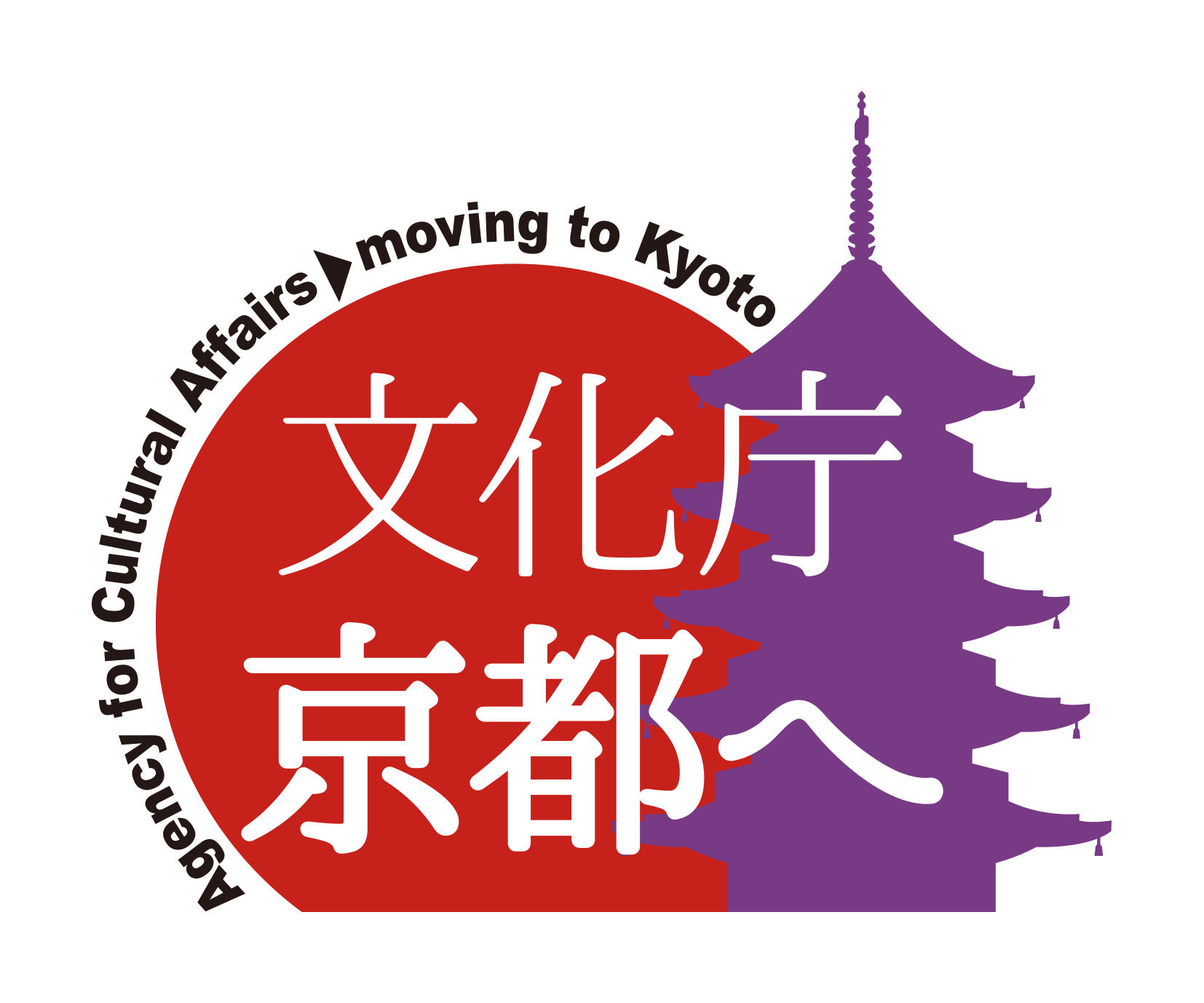We will introduce the efforts of the Reiwa 4th year school town collaboration project.
The “Gakumachi Collaboration Project” is a “learning town collaboration project” in which universities and students and the local community collaborate to recruit and support projects and projects that work on urban development and regional revitalization in Kyoto.
We would like to inform you of the efforts of this year’s selected organizations!
【Activities】Ritsumeikan University Camo Cinema 17 Executive Committee
On Sunday, August 21st, I visited “Camo Cinema 17“!
This time, it was held for the first time in three years due to the influence of the Corona disaster. He was actively engaged in public relations activities such as SNS on Instagram, Twitter, and blogs, and distributing leaflets on the street and at events. The original date of the event, Saturday 20th, was postponed to the next day due to rain, and on Sunday 21st, there was a time when it rained heavily during the day, but the event was held safely without a hitch.
“Kamo Cinema” was launched 20 years ago by Ritsumeikan University students who were interested in environmental conservation of the Kamo River, the symbol of Kyoto, and currently has 35 members. In Kyoto, a city of students, as an effort to raise awareness of beautification among young people of the same generation, cleanup activities and outdoor movie screenings are held every summer. Since then, this year marks the 17th year of the event as an event that connects people to people, people to movies, and people to the Kamo River.
On the day of the event, a cleanup activity called “Pikakamo” was held from 3:30 p.m., slightly staggered due to rain. At the same time, the first “used book exchange event” was held. This is a project in which participants bring books and exchange them for new used books. By reducing the number of books that are thrown away, it was also part of the SDGs initiatives, and books of various genres were lined up at the venue, from novels to picture books, illustrated books, and old magazines. Some of the books had messages for the exchangers, and it was such a project that warmed the feelings of the recipients. In addition, there was a quiz-style project for children and their families, and it was an event that men and women of all ages could participate in.
This year’s film is “Music.” It is an anime film that skillfully visualizes the “initial impulse to music”. When I asked the executive committee members why “Music” was chosen among the many film works, they said that it was a film that reminded us of the importance of “culture” through film, and that we decided to screen such a work at this Camo Cinema because it reminded us of the importance of “culture” while the opportunities to come into contact with and interact with culture and art are disappearing due to the coronavirus pandemic.
Even when the sun went down, the temperature did not drop much and it was hot, but as the screening time approached, more and more people came to watch the film, and many people who were strolling along the Kamo River stopped to look at the screen.
In the future, he said that he is thinking of events that can be done on a daily basis, not just once a year. We look forward to your future activities!
 |
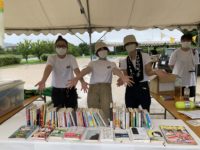 |
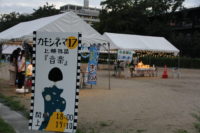 |
 |
【Activities】Kyoto University, Ritsumeikan University, etc. Kyoto Student Theater Festival Executive Committee
On Thursday, September 15th, we visited the “Kyoto Student Theater Festival 2022“!
This year, the festival will be held from September 9th (Friday) ~ 19th (Monday), and it is a large-scale theater festival with 11 performing groups and 10 executive committee members. It is said that it may be full on Saturdays and Sundays, and on the day of the interview, Mr./Ms.’s audience was in the audience.
The venue is “Yosho Children’s Park” located about a 5-minute walk from Demachiyanagi Station. As soon as I arrived, I saw a large white outdoor stage. The special outdoor stage, which is also a symbol, was larger and more sturdy than I had imagined when I saw it on the website, and the sides were covered with wooden pillars painted in white and blue. There is something warm about the large and sturdy structure, and it is convincing that it was made with the image of a cocoon. I was also able to see the inside of the special outdoor stage that was being prepared, and it was very spacious, and the distance between the stage and the audience seats was just right. Even during the interview, I was very impressed by the way each person in charge was silently preparing for the start of the performance.
According to executive committee member Mr./Ms. Okada, the venue was moved from indoors to the outdoor “Yosho Children’s Park” from last year due to the influence of the coronavirus. He talked about how he held regular meetings with local residents, gradually increasing the number of opportunities for interaction and providing a place for students who had lost the opportunity to see theater due Mr./Ms. Corona. Of course, there were difficulties such as weather problems unique to the outdoors and insect repellent measures, but it was clear that the local people were watching over them, and that theater-related professionals and student Mr./Ms. worked together to create a wonderful stage.
In the park, there was a shooting corner where goods were sold and sweets were given as prizes, and there was also an exhibition corner of “Mainichi Flyers” created every day to liven up the theater festival. From the leaflets displayed by Taku-san, Mr./Ms. put stickers on the leaflets they liked, and other ways to enjoy the waiting time until the play started.
While I was enjoying the park, it was time for the show to start, and thanks to the kindness of the executive committee members, I was able to watch the play. The first time I saw a play by a student group, it was, in a word, a masterpiece! I was fascinated by the emotional expressiveness, and at times it made me think, and it was a quick 45 minutes. There was a train running very close to the park, and it was also attractive that they skillfully incorporated it into the play.
On the final day, two awards, the Audience Award and the Jury Award, will be announced, and the group with the highest audience score will be eligible to participate in the National Student Theater Festival to be held next year. I would also like to hope that future stage actors will be born from here.
Although it was a short interview, I was able to hear about the passion of the executive committee members, the charm of the theater festival, the difficulties they faced, and their thoughts for the future, and I was able to enjoy the charm of the Kyoto Student Theater Festival by watching the play. I’m looking forward to your future activities!
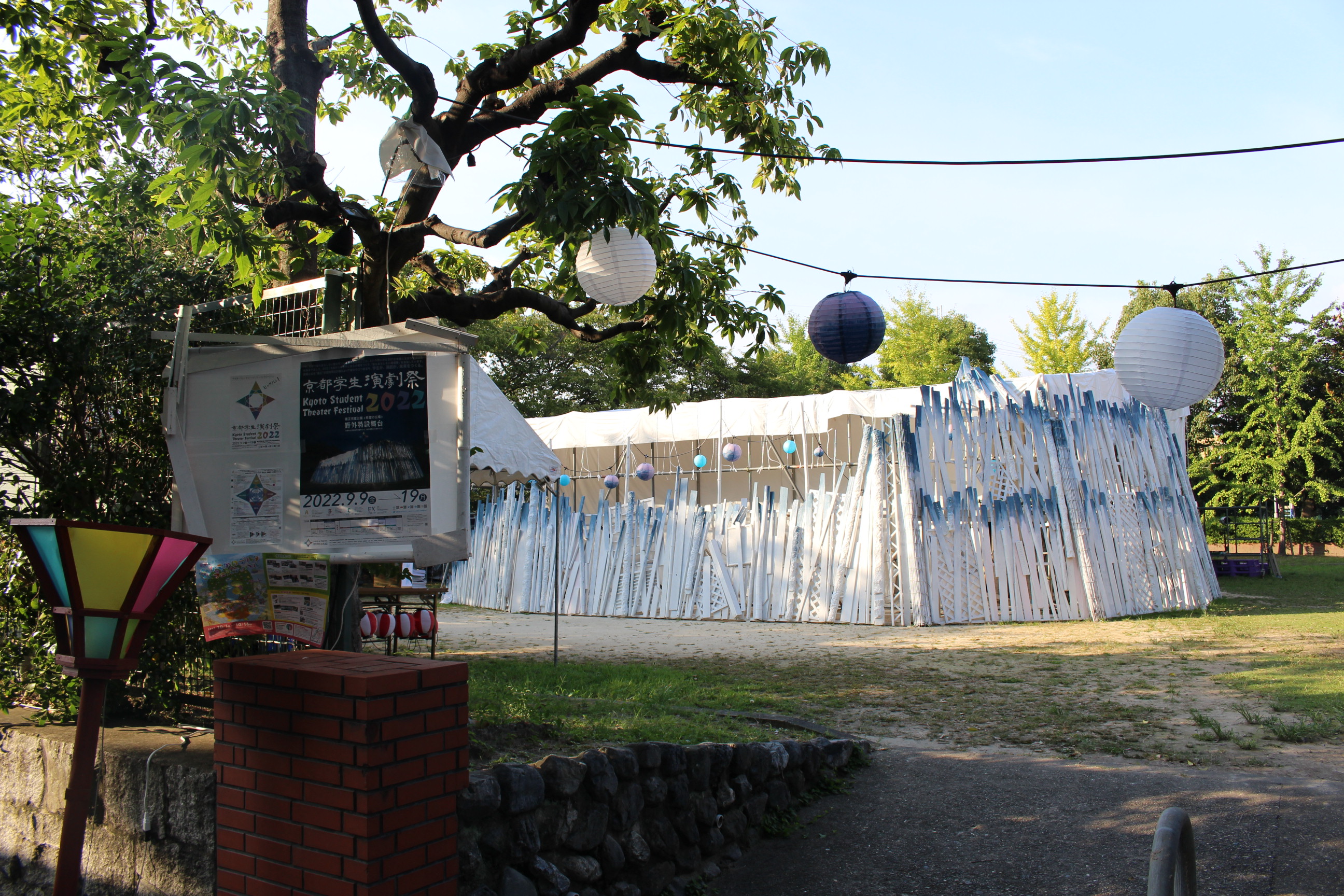 |
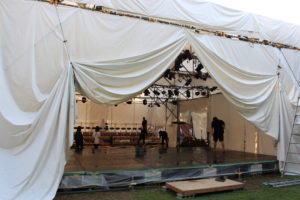 |
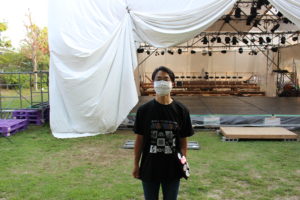 |
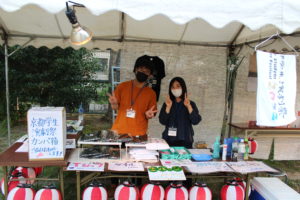 |
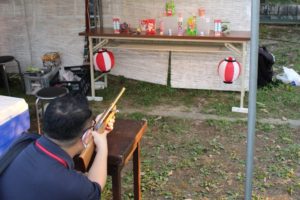 |
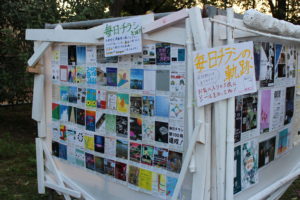 |
















